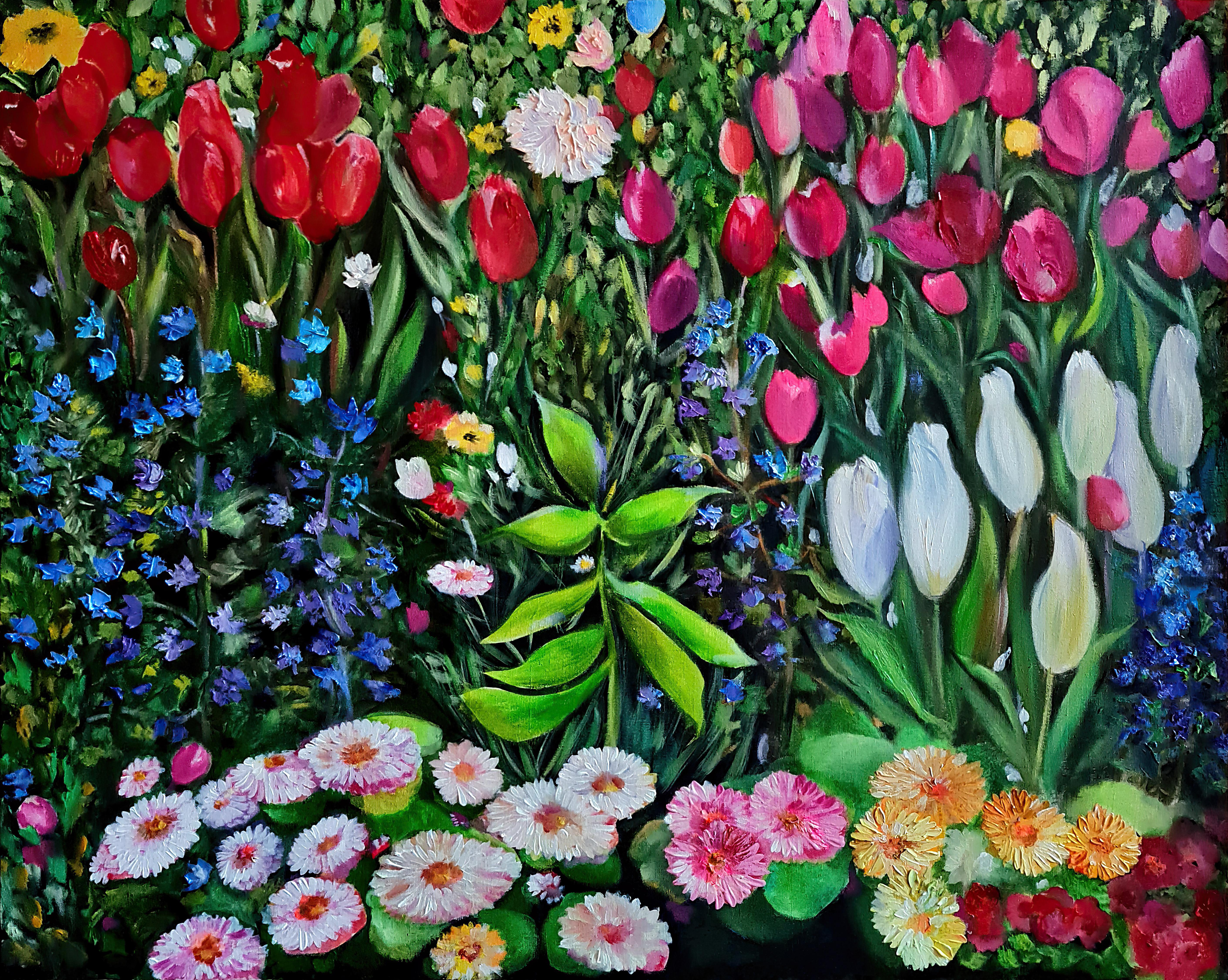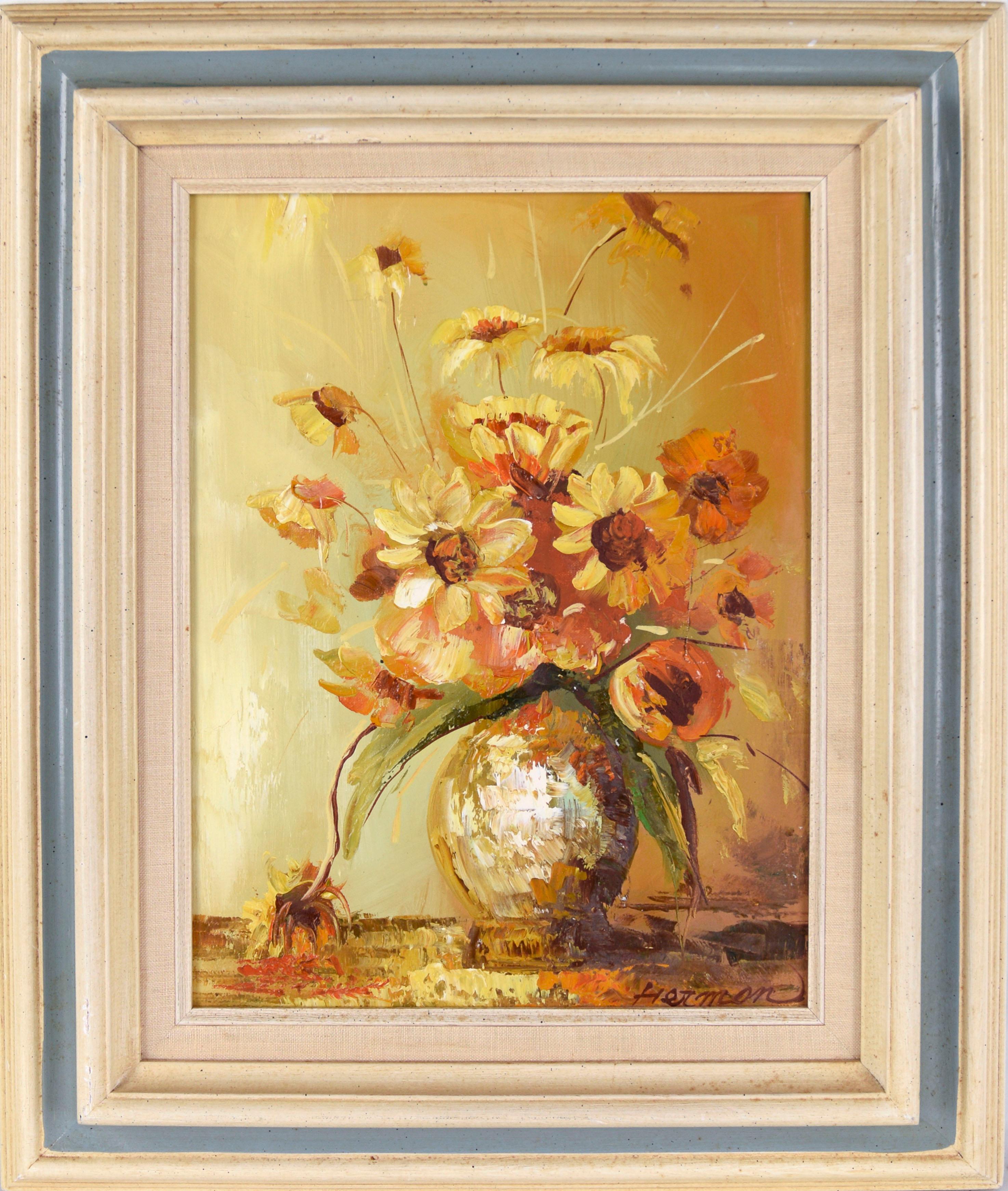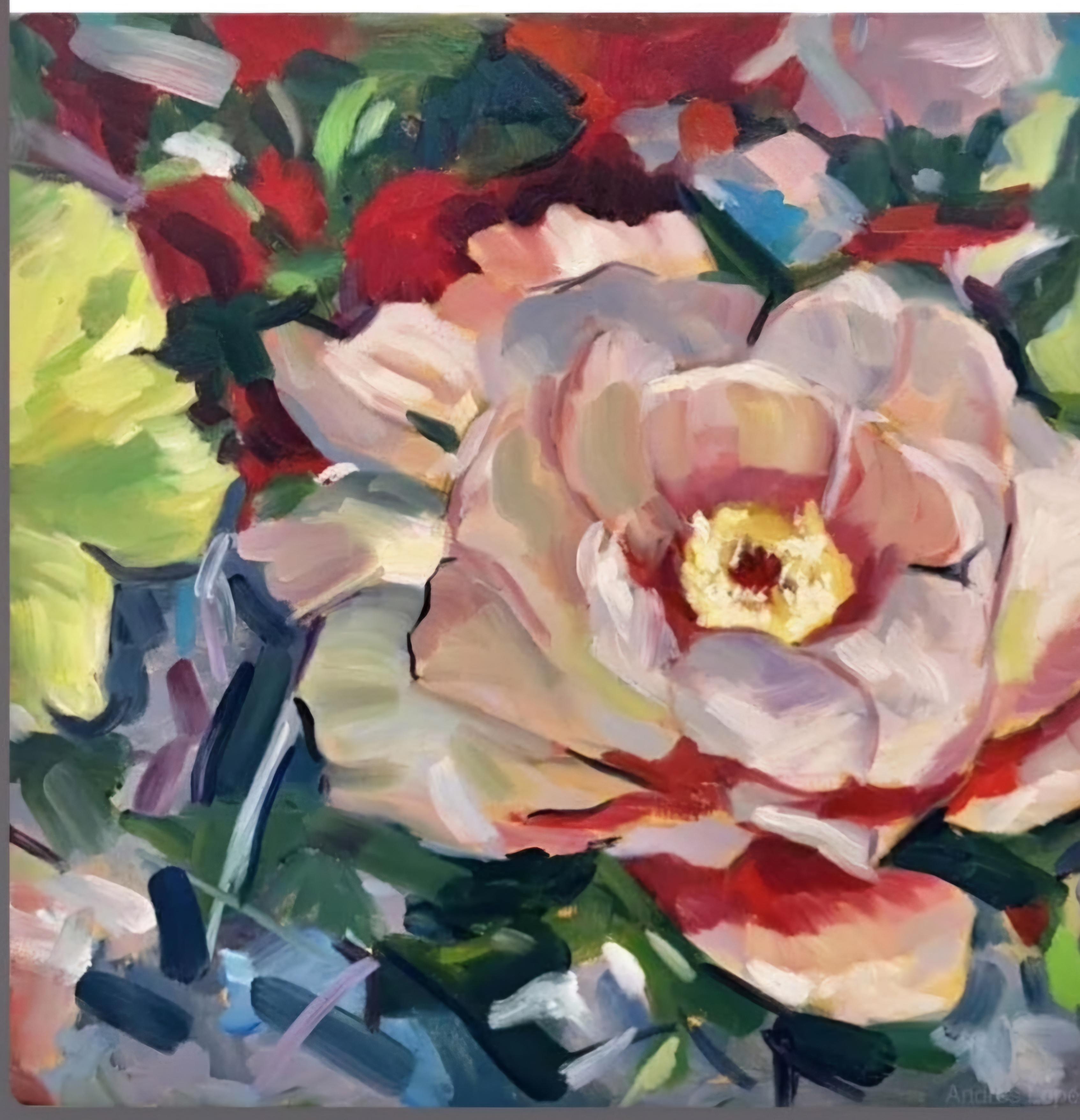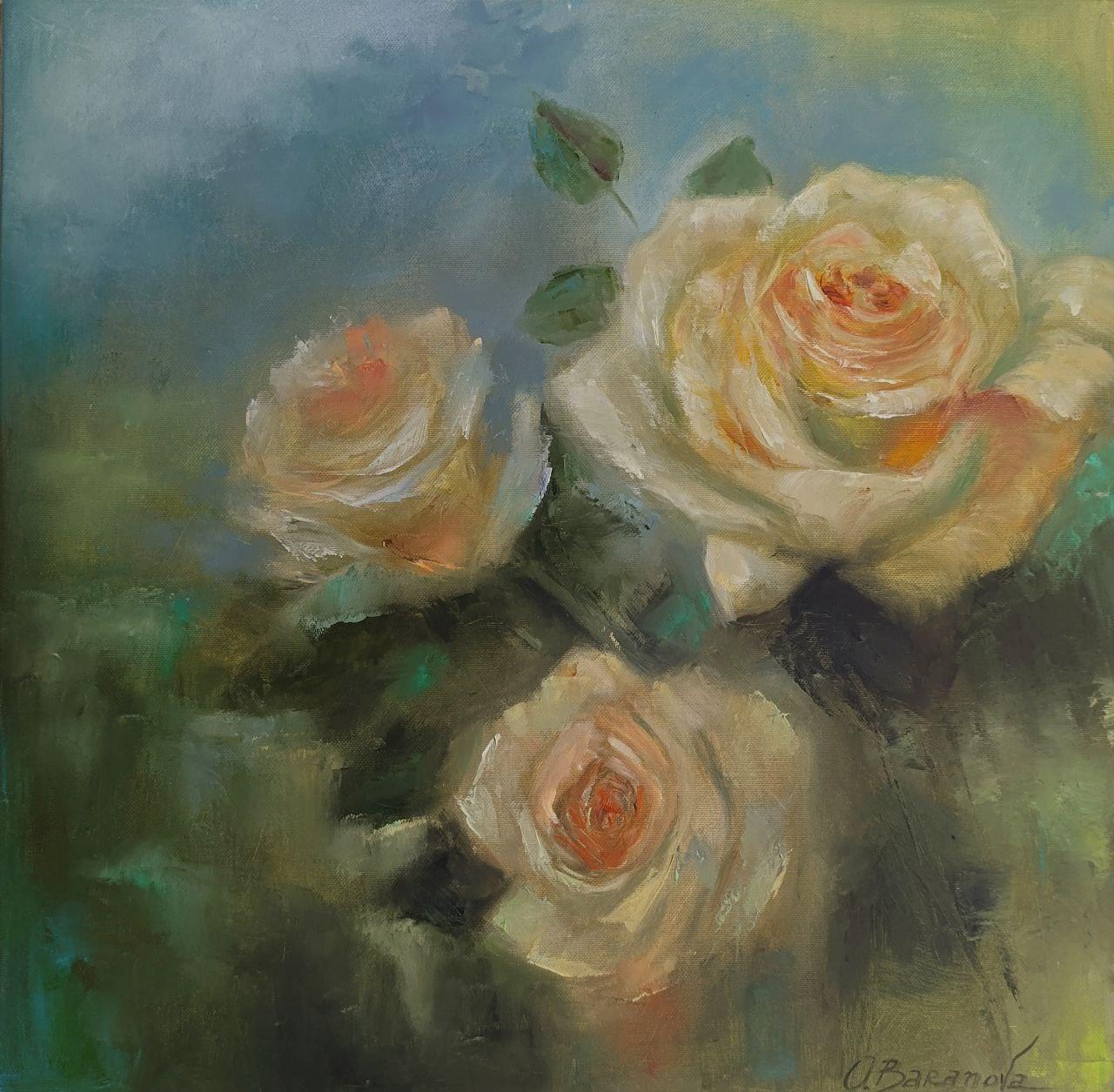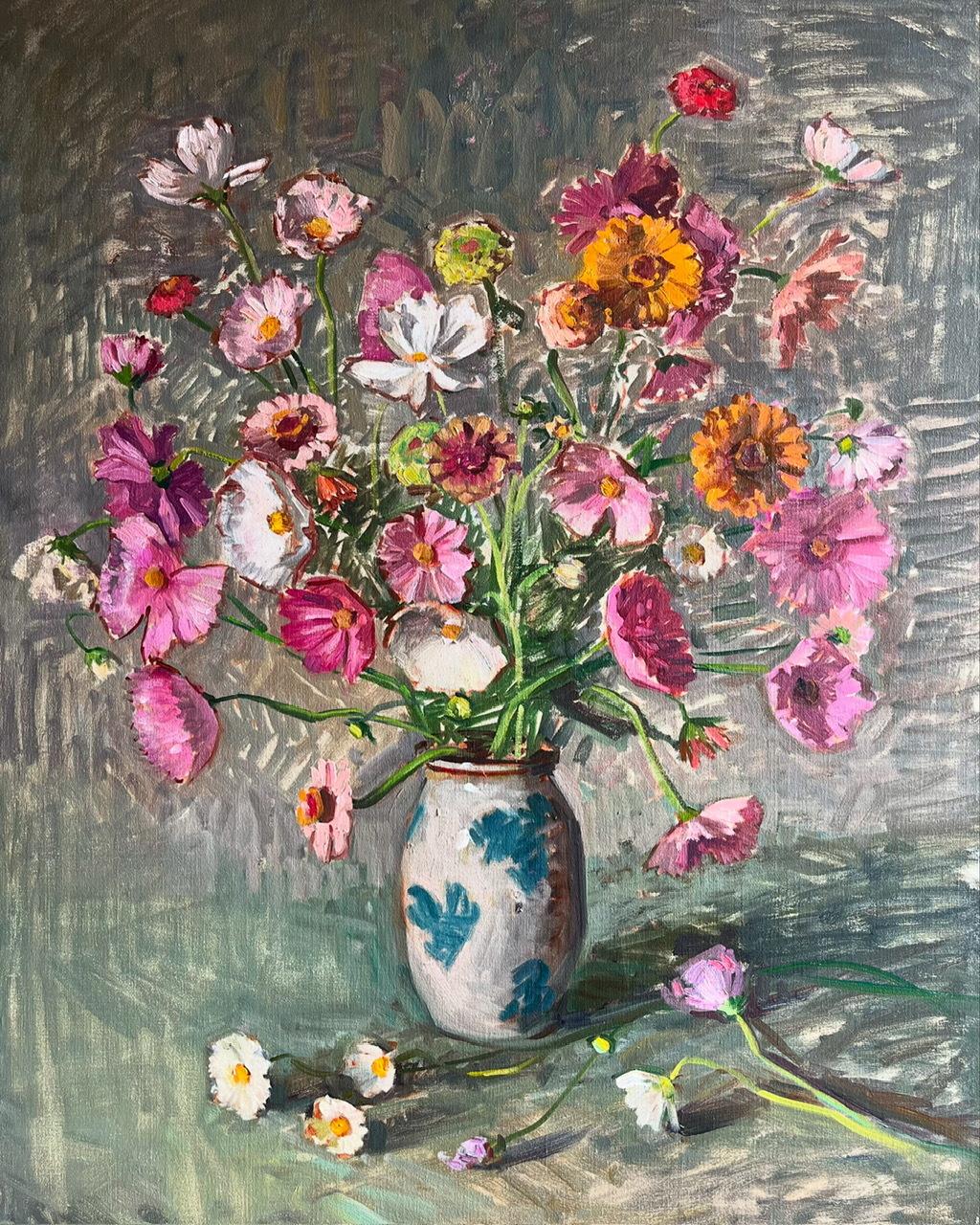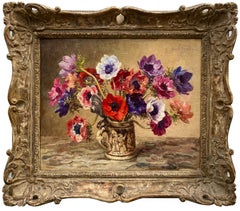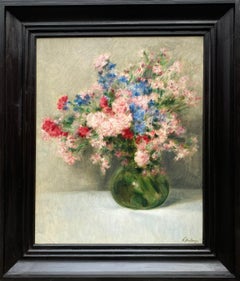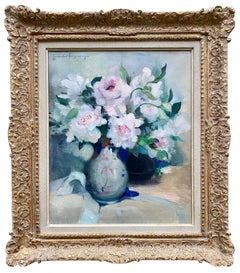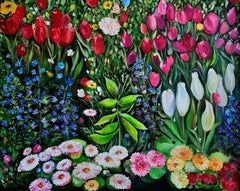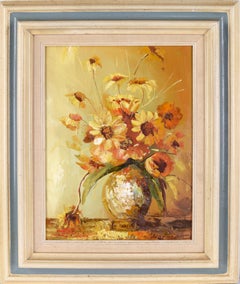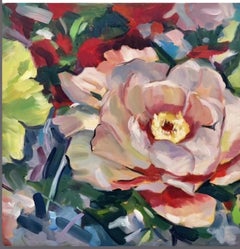Dietz Edzard
Bremen 1893 – 1963 Paris
German Painter
'La musique et les roses'
Signature: signed lower left ‘D Edzard’
Medium: oil on canvas
Dimensions: image size 39 x 74 cm, frame size 56 x 81 cm
Provenance: Private collection; sale Cologne, Van Ham, April 2006;With Noortman Master Paintings, Maastricht;Acquired by a private collection in Belgium at Noortman, June 2006.
Literature: Gerd Muehsam, D. Edzard, New York 1948; Claude-Roger Marx (et al.), D. Edzard. Tableaux de 1917 a 1963, Paris 1971.
Notes: Dietz Edzard, a well-known painter of the School of Paris, was born in 1893, in Bremen, Germany. He has lived in the Rhineland, in Holland and after the First World War in the South of France. From there he moved to Paris where he since had resided. Edzard, a colourful artist who has carried on the traditions of the masters of French Impressionism, studied painting with Max Beckmann. In his book D. Edzard, Gerd Muehsam writes: 'Edzard has captured in his canvases the charm of the Parisian atmosphere. With the light, vibrant touch of his brush, he produced sparkling, and yet delicate, paintings of beautiful women, dancers and flowers. His spirited portrayals of Parisian cafe scenes have made him a favorite of art circles in this country and abroad.' Edzard's love for the tender and delicate, for the fragile and the fair have made him a painter of woman and flowers par excellence. In the style of his still lifes, done in the typically impressionist manner with small dabs of pigment splashed lightly on canvas, his individual temperament is clearly discernable.In 1929, Edzard's work was included in an exhibition of Contemporary Painting at the Jeu de Paume, Paris, a museum dedicated to the Impressionist masters and he exhibited with the famous Parisian art dealer Durand-Ruel. In the last ten years he frequently exhibited in New York and at the Domian Gallery in Montreal.
Biography: Dietz Edzard, a well-known painter of the School of Paris, was born in 1893, in Bremen, Germany. He has lived in the Rhineland, in Holland and after the First World War in the South of France. From there he moved to Paris where he since had resided. Edzard, a colourful artist who has carried on the traditions of the masters of French Impressionism, studied painting with Max Beckmann. In his book D. Edzard, Gerd Muehsam writes: ‘Edzard has captured in his canvases the charm of the Parisian atmosphere. With the light, vibrant touch of his brush, he produced sparkling, and yet delicate, paintings of beautiful women, dancers and flowers. His spirited portrayals of Parisian cafe scenes have made him a favorite of art circles in this country and abroad.’ Edzard’s love for the tender and delicate, for the fragile and the fair have made him a painter of woman and flowers par excellence. In the style of his still lifes, done in the typically impressionist manner with small dabs of pigment splashed lightly on canvas, his individual temperament is clearly discernable.
In 1929, Edzard’s work was included in an exhibition of Contemporary Painting at the Jeu de Paume, Paris, a museum dedicated to the Impressionist masters and he exhibited with the famous Parisian art dealer Durand-Ruel. In the last ten years he frequently exhibited in New York and at the Domian Gallery in Montreal.
Dietz Edzard was born in 1893 and grew up in the city of Bremen in northwestern Germany. He completed his education at age sixteen, and was then apprenticed to an import/export firm specialising in the wool trade with Great Britain.
The young Edzard was not particularly interested in the wool trade however, and he quit after only a year. Instead, he set out for Karlsruhe where he hoped to study art with the Realist painter Wilhelm Trubner (1851-1917) at the Academy of Arts. By the time Edzard arrived in 1910, Trubner was not only teaching, but also serving as the director of the Academy, and it seems that he spent most of his time on administrative responsibilities. Although Edzard clearly obtained his basic art education there, developing his drawing skills in particular, he left after only a brief period of study.
In 1911, he set out for Berlin where he studied with Max Beckmann (1884-1950). Life for a young artist in Berlin during this time was full of excitement as well as tension. The new ideas emerging among the Expressionist artists, like the members of Die Brücke, were both fascinating and challenging. Their work echoed some of the Fauve experiments occurring in Paris at the same time, but there was a distinctive edginess to the German avant-garde caused by the collapsing political and social structures of the society.
With the onset of war in the summer of 1914, Edzard found himself in the infantry, facing all the horrors of trench warfare. When he became ill because of the appalling conditions, he was transferred to the Eastern Front, stationed in the westernmost region of Latvia known as Courland; he fared no better there, however, and was sent to a nearby sanitarium to recover. His illness was not only physical, but psychological; today, it would be called post-traumatic-shock disorder.
When he was finally released in 1919, he made his way to Amsterdam, where he stayed with a friend to recuperate. Gradually, he began to paint again and was able to put together enough work to exhibit in Amsterdam and The Hague in 1920.
Happier times arrived in 1921 when the artist moved to Bavaria, far from the barbaric reminders of the northern German battlefields. There, he met the woman who would become his first wife, and he became a father for the first time.
In 1928, he left Germany for good, moving first to Provençe and then to Neuilly immediately west of Paris. The reason for the move is not entirely clear, although his wife and child do not seem to have accompanied him to France.
His early years in Paris were quite successful. In 1928, he was part of an exhibition at the Galerie Durand-Ruel, which traveled to New York later in the year. In 1929, he was exhibiting in Brussels and in 1930, his work was shown at the Galerie de Boer in Amsterdam. The canvases from these years included a variety of subjects from street musicians to clowns, acrobats and unicyclists. Edzard’s short career as a rope dancer with the circus seems to have graced him with an appreciation for performers of all sorts as well as an understanding of the hardship of this hand-to-mouth existence. These types of figures will remain a part of his repertoire throughout his career.
Throughout the 1930s, Edzard’s work was consistently exhibited at galleries in major European cities as well as New York. There were shows at the Leicester Galleries in London in 1934 and 1936. In New York, his work was included in the Galerie Durand-Ruel exhibits in 1935, 1937 and 1939. And in Paris, he had an exhibition at Galerie Zak in 1933. In short, his career was thriving. His personal life also changed significantly during this decade when he met a fellow artist, Suzanne Eisendieck (1906-1998) who became his second wife shortly after.
Edzard continued to work throughout World War II, focusing on still-lifes of flowers and interiors as well as a handful of images of single female figures. After the war, Edzard produced some of his most memorable canvases. La Famille dans la Loge (1946) is particularly notable as a statement of faith in the family after a lengthy period of grim hardship.
In 1958-1960, Edzard began painting in Venice. He was following in the footsteps of many generations of artists, but he developed an atypical perspective on the usual canal scenes. Rather than concentrate his attention exclusively on the magic of the water, he positioned himself behind large bouquets of flowers on the balconies of the houses along the canals. The view of the gondolas, churches and palaces in the distance was thus filtered through the immediate beauty of the blossoms in the foreground. There are also scenes from the Venetian theatre and of course, carnevale as we can see in the current painting.
He was a colourful artist, who painted with a light and vibrant touch, seeming playful, which are the heritage of the tradition of Watteau, Fragonard, Renoir and the masters of French Impressionism. Edzard’s last exhibition was at the Hammer Gallery in New York in 1962. He died in Paris in 1963. His artwork can be found in important collections and museums worldwide, such as The National Gallery of Art, Washington, D. C., Metropolitan Museum of Art, New York City, Art Institute of Chicago.
